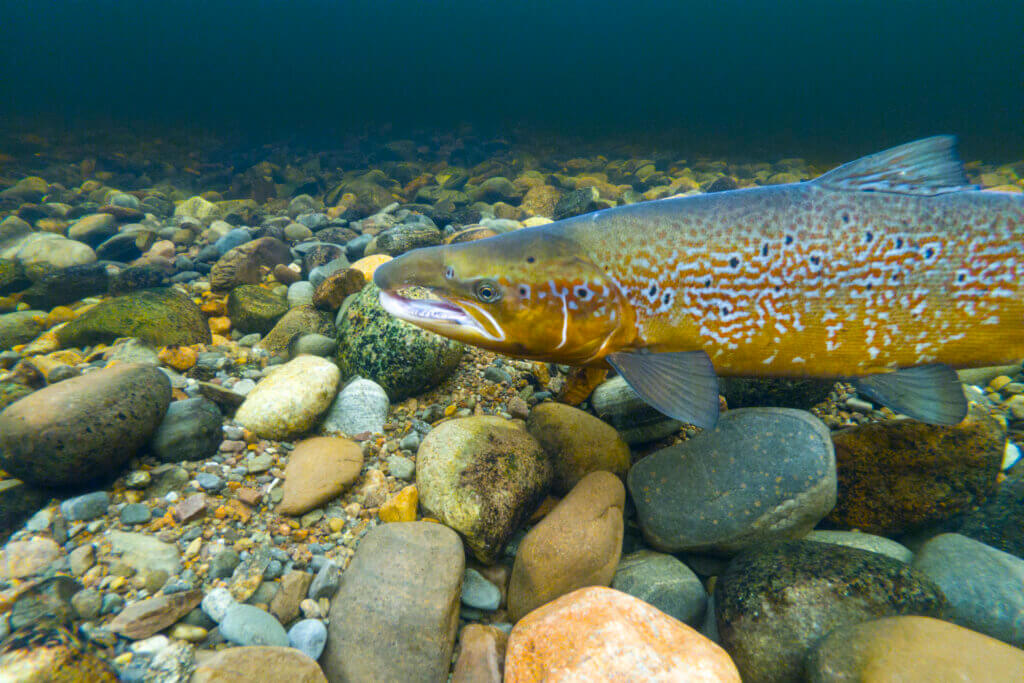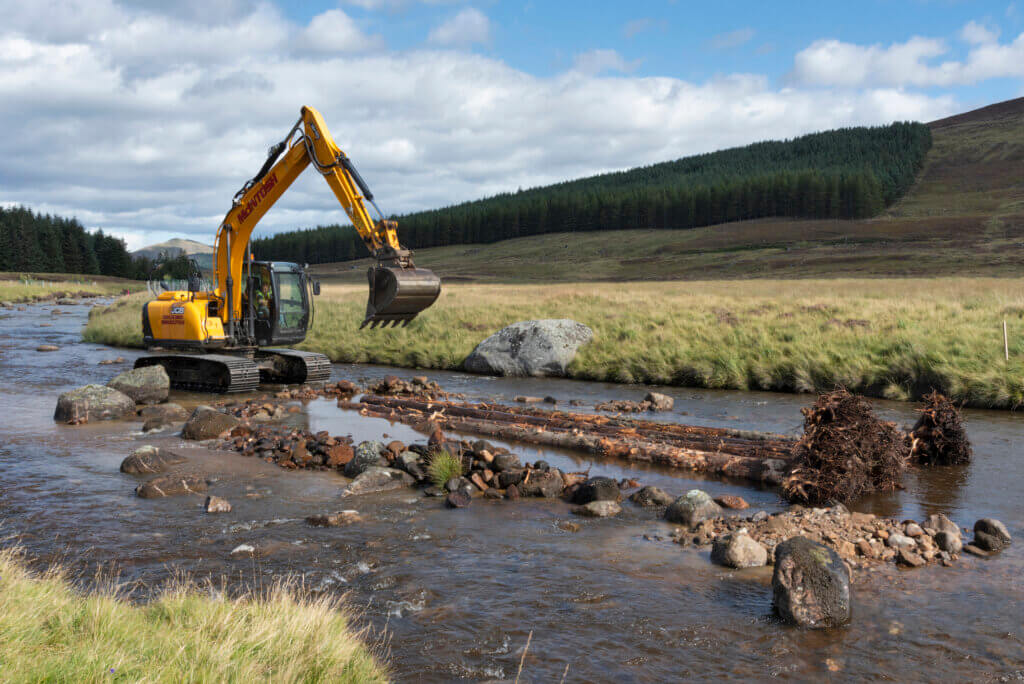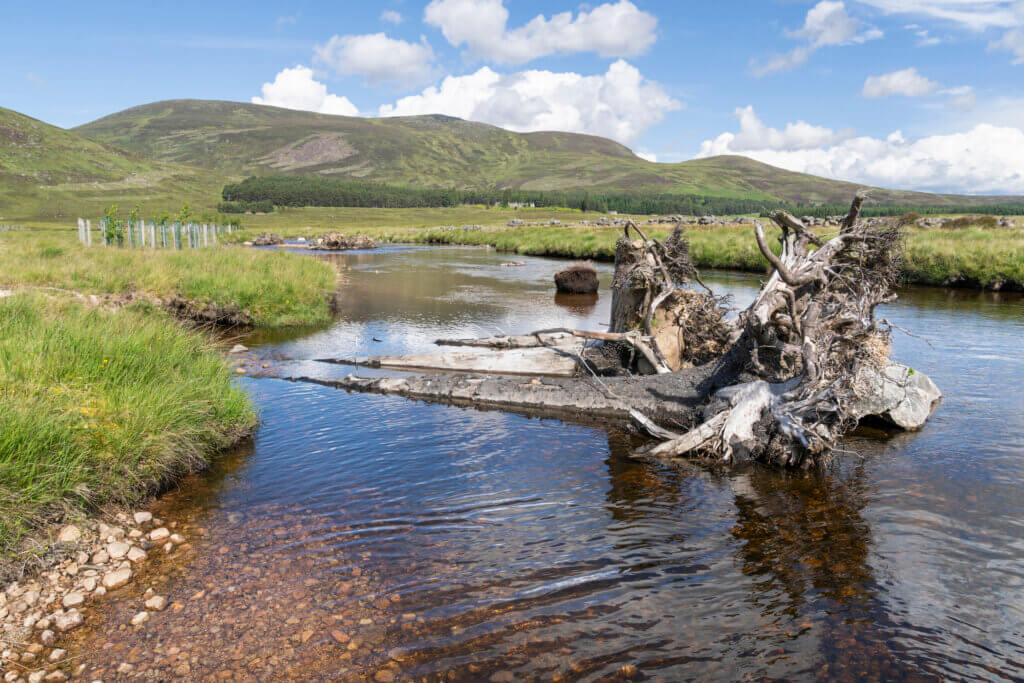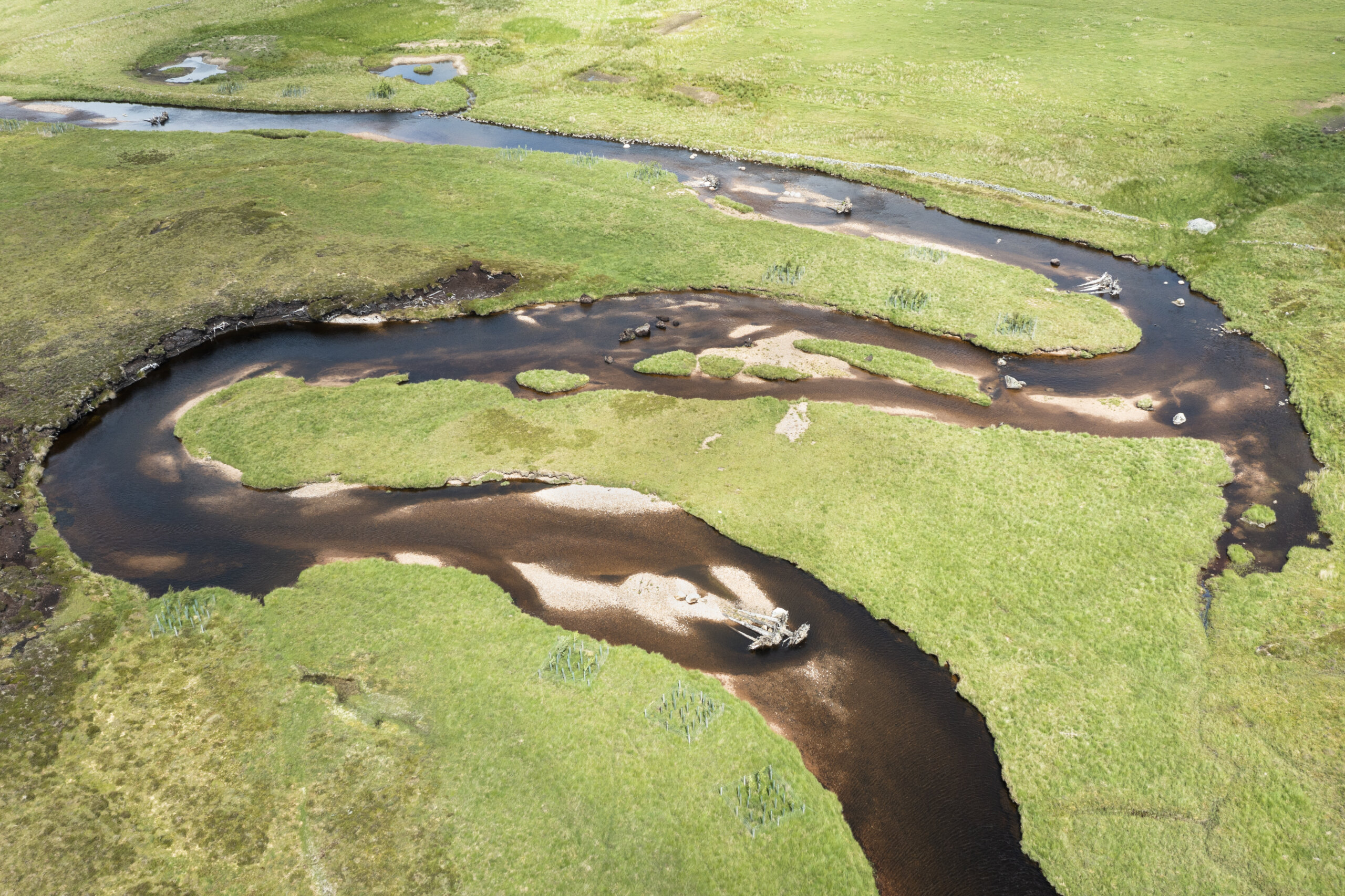Royal family joins river restoration efforts across Scotland as films launched
King Charles and other major landowners have joined an initiative seeking to kickstart recovery of Scotland’s threatened rivers and reverse declines of freshwater species such as wild Scottish salmon.

Pioneering river restoration techniques have been employed at the Balmoral royal estate, featured in a new public awareness campaign launched today by the Riverwoods initiative, a Scottish Wildlife Trust-led partnership of 18 leading organisations including charities and government agencies.

A new series of short films and stories, released as part of the launch, showcases the landowners, gamekeepers and fisheries experts who are already carrying out significant restoration work, such as expanding river woodlands, restoring degraded peatlands, and reconnecting water courses with their natural flood plains.
Through the online films and accompanying articles, the campaign aims to inspire landowners to take practical action to restore life and health to Scotland’s rivers. It also spotlights growing threats to river systems and their wildlife, including Scotland’s rapidly declining wild salmon population.
‘Riverwoods is a wide partnership, and we are always looking to inspire new projects. Through showcasing existing success stories and sharing best practice, we aim to show that restoration is not only possible but also financially viable and well-supported,’ said Mike Thornton, Riverwoods Project Manager.
Trees once lined Scotland’s upland rivers, before centuries of logging, burning and grazing left the riverbanks denuded and exposed. Robbed of their shade in a warming climate, Scotland’s rivers are heating up and holding less dissolved oxygen – to the point it can be impossible for fish to survive.
On Deeside, where wild salmon populations have crashed over recent years, the Balmoral Estate has been carrying out extensive work to restore natural processes on the River Muick, a tributary of the Dee. This includes tree-planting and peatland restoration to ensure more shade and cleaner water.
Working with the River Dee Trust, the Balmoral team is also now replicating an important natural process by inserting dead trees back into the river to recreate complex underwater habitats and diversify flows in ways that benefit wildlife, including spawning fish.
Richard Gledson, Factor at Balmoral Estate, said: ‘Historically, we were so tidy minded. If a tree fell into the river, you’d be told to take it out.’ But times have changed, and King Charles was quickly convinced of the plan’s potential benefits. His Majesty is keen for us to do as much as we can to improve the environment, and if that encourages others to follow our example, then we’d be delighted.’

The new awareness campaign builds on the award-winning Riverwoods film created by rewilding charity SCOTLAND: The Big Picture, with the same team creating the new resources.
‘We hope the experience and testimony of the King and other landowners and experts will boost the appetite for really ambitious nature recovery in and around our rivers,’ said Peter Cairns, Executive Director of SCOTLAND: The Big Picture, who oversaw the production of the new films.

The Riverwoods initiative aims to create a network of thriving riverbank woodlands and healthy river systems across Scotland. As well as boosting biodiversity, the extensive benefits of restoring entire river catchments include cleaner water, carbon storage, reduced flood risk, healthier soils, and improved health and wellbeing for people.
Scotland’s rivers and streams cover a remarkable 125,000km – more than 12 times the length of the country’s coastline. River woodlands across Scotland face threats including over-grazing, pollution, and the introduction of invasive exotic species.
For further information, see riverwoods.org.uk/showcase and scotlandbigpicture.com.
Ends
[registration_form]
All well and good but are they also significantly reducing the numbers of deer to allow natural tree regeneration?
And what predator control are the keepers involved with?
Sounds like they are trying to do what beavers would do if they had not been eradicated. I’d like to suggest that the River Dee has beavers introduced. I’m sure that Naturescot would be delighted to provide Beavers on production of a correctly written proposal.
This is a great initiative from King Charles. Great to see the rivers are being restored. The planting if trees to keeping the rivers from heating up is crucial.
Here is Canada we are clear cut logging our forests. The rivers are heating up. And salmon numbers are crashing. Lessons humankind never seem yo learn.